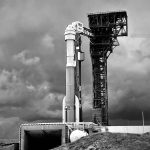Boeing said Friday that its Starliner spacecraft will be grounded indefinitely while it continues to investigate problems with the valves in the propulsion system.
In the 10 days since Boeing and NASA scrubbed the launch in Florida, technicians and engineers have sought to open 13 valves that control the flow of dinitrogen tetroxide (NTO) oxidizer through the service module of the spacecraft. There are 24 oxidizer valves in the propulsion system, which is critical both for in-space travel as well as launch emergency escapes.
Boeing has been able to open nine of the valves, said John Vollmer, vice president and program manager of Boeing’s Commercial Crew Program. The other four remain stuck. As a result, the company plans to de-stack the Starliner spacecraft from its Atlas V rocket and move it to the nearby Commercial Crew and Cargo Processing Facility for deeper troubleshooting.
"We made the decision that we were just out of runway and we had to come back to the factory," Vollmer said during a teleconference with reporters on Friday.
The decision to move Starliner precludes a launch date this month, and it may prevent a launch before 2022. United Launch Alliance, which is providing the Atlas V rocket, will need to focus its attention on NASA's Lucy mission, due to launch in mid-October. While it is possible Starliner could be readied for a November launch, Vollmer did not sound optimistic.
"It's probably too early to say whether it's this year, or not," he said. "I would certainly hope for as early as possible, and if we could fly this year it would be fantastic."
More likely, according to sources familiar with NASA's schedule for traffic to the International Space Station and United Launch Alliance's manifest for the rest of the year, a launch before February 2022 is unlikely. And that is reliant upon Boeing finding the root cause of the valve issue, identifying a fix, implementing it, and successfully testing it.



 Loading comments...
Loading comments...
